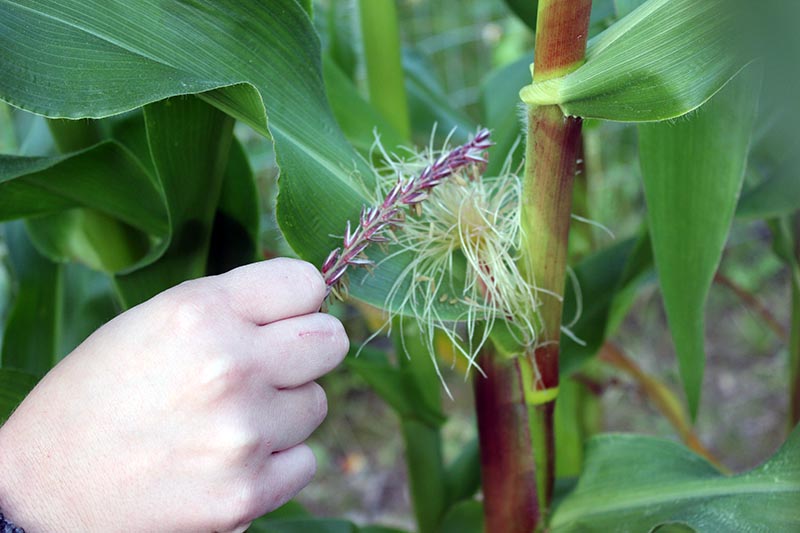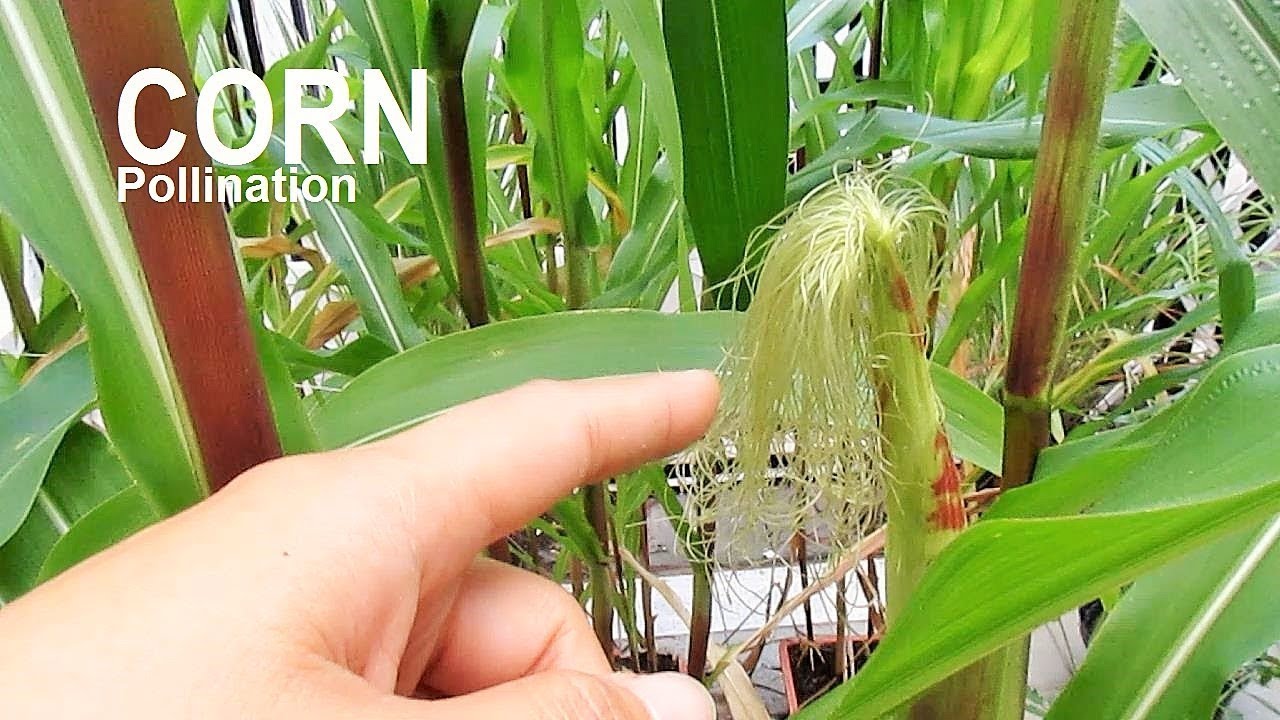To pollinate corn by hand, gently shake the tassels to release pollen onto the silk. Here is a step-by-step guide on how to pollinate corn manually for a successful harvest.
Corn is an essential crop and a popular addition to many gardens. However, sometimes natural pollination can be restricted, leading to poor kernel development. In such cases, hand pollination becomes necessary to ensure a fruitful corn harvest. Hand pollinating corn requires transferring pollen from the tassels (the male part of the plant) to the silks (the female part of the plant).
This allows the transfer of pollen grains to the ovules, resulting in fertilization and successful kernel development. This article provides a detailed explanation of the steps involved in manually pollinating corn. By following these guidelines, you can boost your corn harvest and enjoy delicious, homegrown corn. So let’s dive in and learn how to effectively pollinate corn by hand.

Credit: gardenerspath.com
Benefits Of Hand Pollination In Corn
Hand pollination in corn offers several benefits for farmers. Firstly, it results in increased yield and crop quality. By manually transferring pollen from the male to the female flowers, farmers can ensure that each ear of corn is adequately fertilized, leading to larger and healthier kernels.
Another advantage of hand pollination is the prevention of cross-pollination. Corn is a wind-pollinated crop, which makes it susceptible to unwanted pollination from neighboring plants. By performing hand pollination, farmers can control the fertilization process and avoid unwanted crossbreeding.
In addition, hand pollination is crucial for ensuring seed purity. Farmers who grow heirloom or hybrid varieties may wish to maintain a specific genetic makeup. By hand pollinating, they can keep the seeds pure and preserve the desired characteristics.
Understanding The Corn Pollination Process
When it comes to pollinating corn by hand, it’s crucial to have a good understanding of the corn pollination process. This begins with a closer look at the anatomy of a corn plant. Each corn plant has both male and female flower structures. The male flowers, called tassels, are located at the top of the plant. They produce pollen, which is released into the air.
The female flowers, known as silks, are found in the leaf axils along the sides of the plant. Each silk is connected to a potential kernel. The role of pollen in fertilization is essential. In order for corn to develop kernels, the pollen must land on the silks and then travel down to reach the ovule, fertilizing it.
By understanding the anatomy of a corn plant, knowing the male and female structures and the important role of pollen, you can now move on to the practical aspect of hand-pollinating corn.
Identifying The Right Time For Hand Pollination
Identifying the right time for hand pollination is crucial in ensuring successful pollination of corn plants. Determining the maturity of corn plants is the first step in this process. The key to recognizing the signs of pollination readiness lies in observing the silks. When the corn plant reaches maturity, the ears will be fully formed and the silks will emerge. This is a clear indication that the corn plant is ready for pollination.
Inspecting the silks is essential as it helps in determining whether pollination is required. Silks that are withered, dried or brown in color indicate that the pollination process has already taken place. On the other hand, fresh, moist and pale yellow or white silks suggest that pollination has not occurred and hand pollination may be necessary.
By carefully monitoring the maturity of corn plants and recognizing the signs of pollination readiness through the appearance of fresh, moist and pale yellow or white silks, farmers and home gardeners can effectively time and perform hand pollination to ensure a healthy corn harvest.
Tools And Materials Needed For Hand Pollination
For hand pollination of corn, you will need a few essential tools and materials. Firstly, a clean paintbrush or a cotton swab will be used to transfer pollen. These tools should be clean to avoid contamination. Additionally, a collection container will be needed to collect the pollen from the male part (tassel) of the corn plant. It can be a small jar or a plastic bag. Finally, you might consider wearing protective gloves or a mask to prevent any allergic reactions or irritation. These items will help ensure a successful hand pollination process for your corn plants.
Step-by-Step Guide To Hand Pollinating Corn
Hand pollination of corn can be a simple and effective way to ensure successful pollination and increase yields. To start, choose healthy corn stalks with well-developed tassels and intact silk on the ears. Before collecting pollen, prepare a clean and dry collection container to store it. To collect pollen, gently shake the tassels over the container, allowing the loose pollen grains to fall into it.
Next, carefully transfer the collected pollen onto the exposed silks of each ear, ensuring that each silk receives a sufficient amount. Repeat the process for multiple plants to improve cross-pollination and overall yield. By following these steps, you can effectively hand pollinate corn and increase the chances of a successful crop.
Tips For Successful Hand Pollination
Hand pollination is an effective method to ensure successful corn pollination. Proper timing is crucial for optimal pollination. It is essential to pollinate the corn ears when the silks are receptive, which is usually when they are shiny and brown and ready to be pollinated. Collecting and storing excess pollen can be useful to have on hand. To collect pollen, shake the tassels over a container to release the pollen, then transfer it to a small bag or envelope for storage.
It is important to avoid contamination during the pollination process to ensure accurate results. This can be done by using separate tools for each ear and taking precautions to prevent cross-pollination from other corn plants. By following these tips, you can successfully hand pollinate corn and increase your chances of a bountiful harvest.
Monitoring And Caring For Hand-pollinated Corn
Hand-pollinating corn can be a meticulous process, but with the right care and attention, you can achieve successful pollination. Here are some important steps to monitor and care for your hand-pollinated corn:
| Identifying successful pollination |
|---|
| Monitor the silks closely for signs of pollination. Successful pollination can be seen when the silk turns brown and dries up. |
| Maintaining proper watering and fertilization |
|---|
| Ensure regular watering to keep the soil moist, but avoid overwatering to prevent rotting. Apply a balanced fertilizer to provide necessary nutrients to your corn plants. |
| Protecting hand-pollinated ears from pests or diseases |
|---|
| Implement pest control measures such as using organic insecticides or physical barriers to protect your hand-pollinated ears from pests. Regularly inspect the plants for any signs of diseases and take appropriate action. |
Frequently Asked Questions Of How To Pollinate Corn By Hand
How To Pollinate Corn By Hand?
To pollinate corn by hand, wait until the tassels on top of the corn plants start shedding pollen. Gently shake the tassels over the silks of the corn ears to ensure fertilization. Be sure to cover each silk with pollen to maximize the chances of successful pollination.
When Should I Start Hand Pollinating My Corn?
Start hand pollinating your corn when the tassels appear on the plants and start shedding pollen. This usually happens around 2 to 3 weeks after the corn plants have reached a height of about 3 feet. Be diligent in monitoring the growth of your corn plants to catch the right time for hand pollination.
What Tools Do I Need For Hand Pollinating Corn?
For hand pollinating corn, you don’t need specialized tools. Use your hands to gently shake the tassels to release pollen. Alternatively, you can use a small paintbrush or cotton swab to gather the pollen and then brush or dab it onto the silks of each corn ear.
Why Is Hand Pollination Of Corn Necessary?
Hand pollination of corn becomes necessary in certain situations, such as when there is limited availability of natural pollinators like bees or when growing corn in a greenhouse or indoors. Hand pollination ensures that each silk on the corn ear is adequately fertilized, leading to better yield and quality of corn kernels.
Conclusion
Hand pollination is a crucial technique for ensuring the success of corn crops. By carefully transferring pollen from the tassel to the silks, you can increase the yield and quality of your corn harvest. By following the steps outlined in this blog post, you’ll have the knowledge and skills to effectively pollinate your corn plants by hand.
Happy farming!

